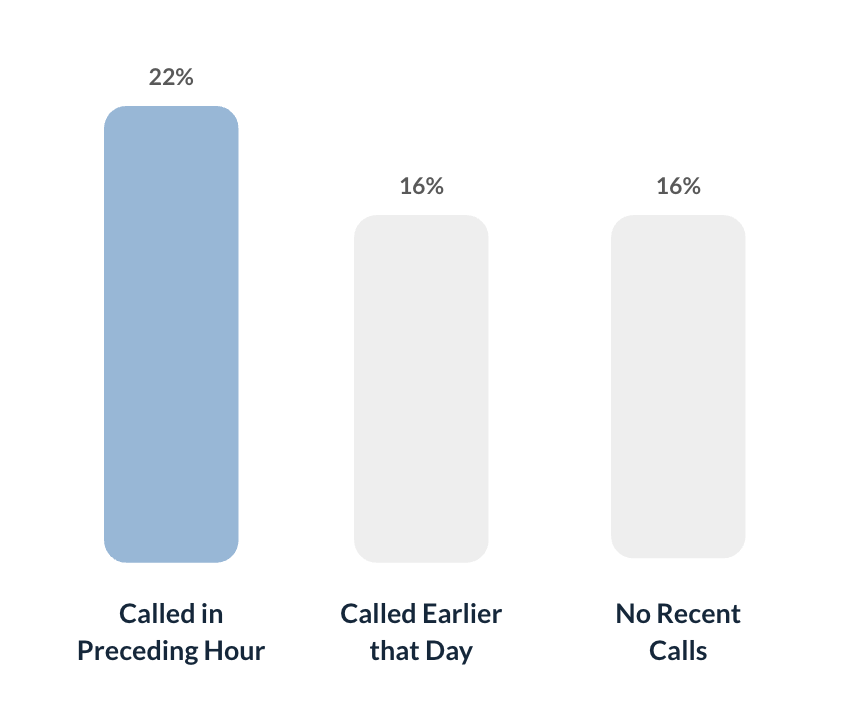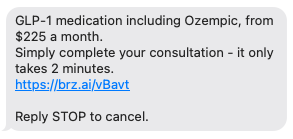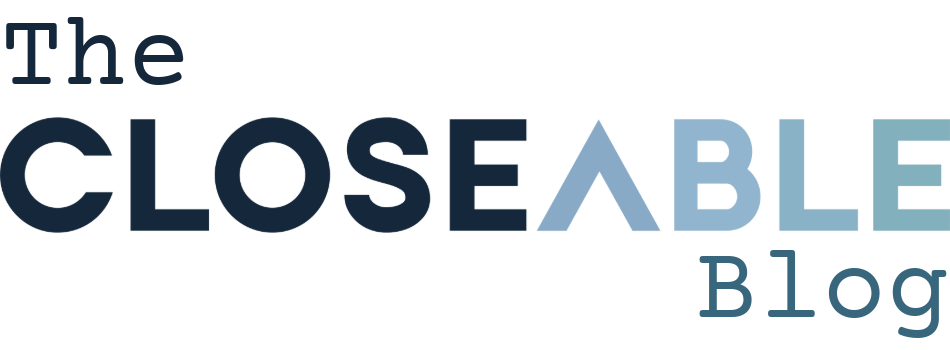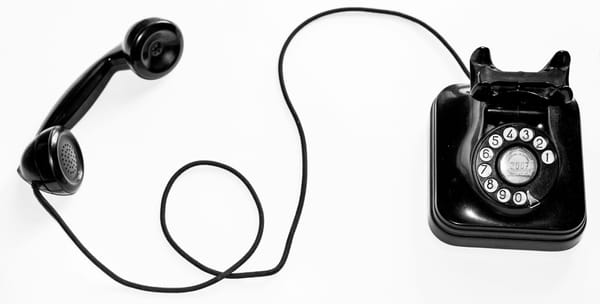How Calling First Maximizes Your Text Reply Rate
While we’re seeing a lot of conversations move to SMS for Consumer & SMB sales, we're big believers that phone calls are far from dead and remain an underutilized channel. An unsurprising driver of this is conversation quality. You can cover more information quickly, and customers who are fully willing to ghost you on text have a harder time hanging up mid-conversation. Because of this, we find conversion rate (to sale) to be up to 3-4x better on some products when you can successfully get someone on the phone versus just getting a text or email response.
But here’s the more counterintuitive factor: even when people don’t pick up the phone, the act of calling first also makes them significantly more likely to reply to your texts. The key, however, is timing. Take this sample of follow up outreach messages.

A text sent within an hour of a preceding call earned a six point better response rate. That engagement boost evaporates after that first hour, though. A text sent even 2-3 hours later gets a response rate no better than one without any preceding call.
Why Timing Matters, aka “Do As Normal Humans Do”
The reason that one-hour window matters is because the timing itself is the signal. When a customer receives a call (and maybe a voicemail) from a person, followed quickly by a text, the two actions are perceived as a single, cohesive outreach. It feels personal and signals that a real human is trying to connect.
As more time passes, that connection fades. A text the next morning feels less like a thoughtful follow-up to a call, and more like a separate, potentially annoying, new message. The immediacy is what makes the text feel human, and gives you some permission to combine communications in two channels without being seen as a nuisance.
Does This Change the Sweet Spot Between Personal and Automated
This insight gets into a challenge we think about often: balancing the efficiency of automation and the effectiveness of a personal touch. In SMS marketing in particular, that spectrum is wide and the ends are painfully obvious.
On one side, you have purely automated, no-reply marketing messages that feel impersonal and are often ignored. They’re as close to spam as you can get from a company you’ve actually signed up for.

On the other end, you have completely manual, personal messages. These are effective because they’re genuine.

The "totally personal" approach is powerful, but obviously inefficient. You’re making a person copy and paste largely templated messages instead of focusing on more thoughtful, high value work. And there are other downsides: team capacity fluctuates, coverage hours limit reach, and response times can lag.

Underwhelming spoiler: there is no single sweet spot.
For some high-LTV, long-buying-cycle products, the inefficiency of the totally manual approach is well worth it. For low-LTV transactional products, you need to be on the automated end of the spectrum out of necessity.
Most of the time we find the best path is somewhere in the middle: automating the messages for initial outreach on a fixed cadence, or triggered by actions an assigned rep makes (e.g., a call), and managing follow-up individually or combined with an AI assistant.
Ultimately, the goal is about making communication feel more human, even when it's not. Timing and effectively combining channels is a core component of that goal, just as the message itself is.




